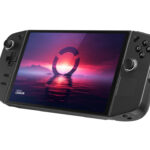
Apple’s press conference on Friday may have controlled consumer’s growing discomfort about tackling the antenna reception issue but claiming that the antennagate is faced by most mobile manufacturers hasn’t gone well with handset makers.
Manufacturers like RIM, Samsung, HTC, Nokia and Motorola have expressed their disagreement to Apple’s claim in way or the other.
“Apple’s attempt to draw RIM into Apple’s self-made debacle is unacceptable. Apple’s claims about RIM products appear to be deliberate attempts to distort the public’s understanding of an antenna design issue and to deflect attention from Apple’s difficult situation. RIM is a global leader in antenna design and has been successfully designing industry-leading wireless data products with efficient and effective radio performance for over 20 years. During that time, RIM has avoided designs like the one Apple used in the iPhone 4 and instead has used innovative designs which reduce the risk for dropped calls, especially in areas of lower coverage. One thing is for certain, RIM’s customers don’t need to use a case for their BlackBerry smartphone to maintain proper connectivity. Apple clearly made certain design decisions and it should take responsibility for these decisions rather than trying to draw RIM and others into a situation that relates specifically to Apple.”
“We have had very few complaints about signal or antenna problems on the Eris…approximately .016% of customers.”
“The antenna is located at the bottom of the Omnia 2 phone, while iPhone’s antenna is on the lower left side of the device. Our design keeps the distance between a hand and an antenna. We have fully conducted field tests before the rollout of smartphones. Reception problems have not happened so far, and there is no room for such problems to happen in the future.”
“Antenna design is a complex subject and has been a core competence at Nokia for decades, across hundreds of phone models. Nokia was the pioneer in internal antennas; the Nokia 8810, launched in 1998, was the first commercial phone with this feature.
Nokia has invested thousands of man hours in studying human behavior, including how people hold their phones for calls, music playing, web browsing and so on. As you would expect from a company focused on connecting people, we prioritize antenna performance over physical design if they are ever in conflict.
In general, antenna performance of a mobile device/phone may be affected with a tight grip, depending on how the device is held. That’s why Nokia designs our phones to ensure acceptable performance in all real life cases, for example when the phone is held in either hand. Nokia has invested thousands of man hours in studying how people hold their phones and allows for this in designs, for example by having antennas both at the top and bottom of the phone and by careful selection of materials and their use in the mechanical design.”
“Consumers don’t like being told how to hold the phone … It is disingenuous to suggest that all phones perform equally.”
Finally a short satirical video explaining the whole iPhone 4 situation right before its launch.





Leave a Reply